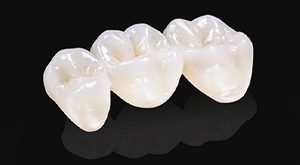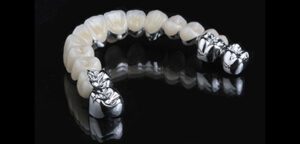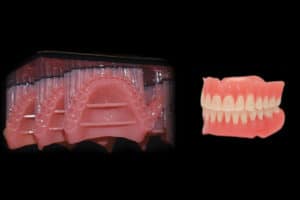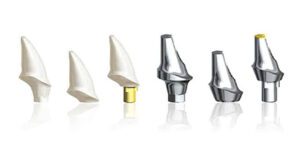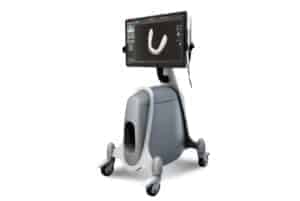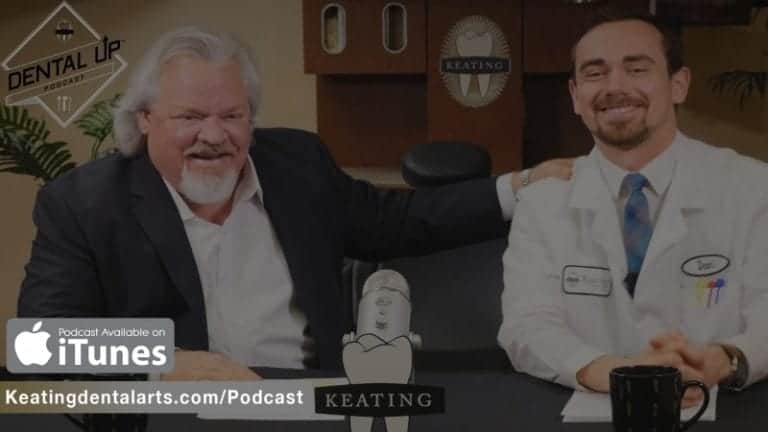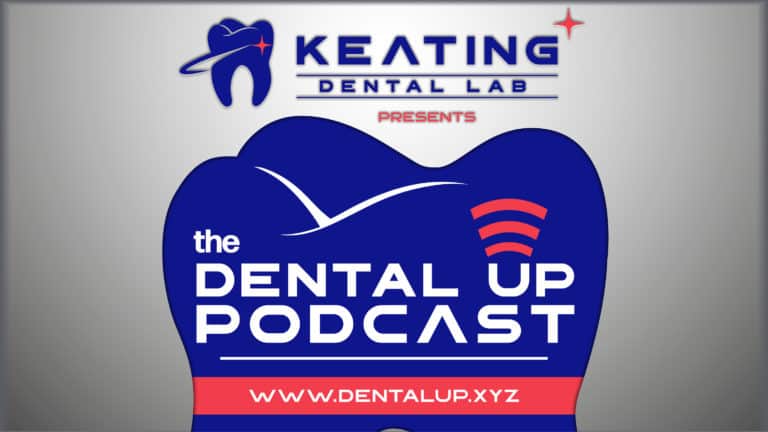This week on the Dental Up podcast Shaun Keating CDT and Dean Tassey discusses using CAD/CAM Technology for Dental Restorations.
Full Transcription:
Shaun Keating: Hey everybody. Shaun Keating here. I’d like to welcome you to this week’s Dental Up podcast, here at Keating Dental Lab. Today I’m with Dean Tassey. He’s our CAD/CAM manager. Dean welcome it’s good to see you. Dean Tassey: Thanks for having me on. Shaun Keating: Appreciate you coming on out. I like to start off doing a little bit of sports, talking about sports. Obviously yesterday was the Super Bowl. What a game. Dean Tassey: One for the record books, that’s for sure. Shaun Keating: That was really unbelievable. You know at the beginning there, I’m the only guy there with the Patriots, you know, rooting for them. And everyone’s one of the Falcons and, those Falcons man. Three scores. I mean it’s like 21, zip. And it wasn’t even half-time and I’m just like what is going … And I think America was shellshocked that Brady and these guys could not get anything going, you know, and Matt Ryan over there and Julio Jones, they were looking really unbeatable in those first few quarters. I was just dumbfounded, like what is going on. Especially to like Vegas the over under was in the sixty points, it was like low scoring for sure if only one team’s scoring and so, just couldn’t believe it. Then the Patriots get down there and get a little field goal at least, but shit, what was it, a 25 to 3 or something. 28 to 3, up by 25 points. Man. And then they came back and it was just like unbelievable. I was just going crazy. I had this pool I was in and some of the worst numbers you can get in a pool is like 2 – 2, 5 – 5 and 8 – 8. And my numbers I had was 8 – 8, and I was like what the heck? But then, at the end of the game, the score was 8 – 8 and it was like one in a million chances, and all of the money kinda comes to me and it’s like, the heck man. The rich get richer I guess. It was just so crazy. But what a Superbowl, I mean. That was very, very enjoyable. Did you watch it somewhere? Or … Dean Tassey: Yeah, I was with my parents. I was over at their place, had a few family friends over, just a nice relaxed atmosphere. Shaun Keating: How’s your dad doing? His dad is actually our family dentist for many, many years. Dean came working for us a few years back after working with your dad for a few years. Dean Tassey: That’s correct, yeah. Shaun Keating: Just amazing. Your dad’s such a great dentist. We’re going to have to have him out here too, for sure. Have him talk about … He’s just so gentle, you know. My wife has always been real hesitant at going to the dentist, she’s a smaller person and just real kinda delicate and … Man, your dad. After she went there she goes I want to go back to him every time. I just love it after all the different dentists. Sorry about the other day. My wife really likes his dad though. So a really great dentist, your dad is… Okay, we’ll today our little dental education tid bit’s going to be in the CAD/CAM area again. We do get a lot of digital files, a lot of analog files. The digitals really came upon us in the last five years in the dental lab industry. Probably a few more than five years, six, or seven. It’s changed the whole atmosphere. A lot of way things were done. It’s like lost wax technique, you know, you’ve got to wax, cast and invest, opaque it. Then the all ceramics came around, but whole CAD/CAM situation, it’s just a whole new paradigm shift for the dental lab industry. You gotta switch it up. You can’t be doing it old school. Because as more and more of the dentists are starting to retire, the newer, younger guys coming in, it’s going to go digital, big time, as it already has. I want to talk to you a little bit about … Discuss the process of finishing a case and the CAD/CAM coming in. Tell me how it works. Tell the dentists and the people out there, how does it come about when we do these cases? Dean Tassey: Well, when we have a digital scan, we accept it, we can see right away if there’s any issues, how clear the margins are, clusone cleanse, your day-to-day bread and butter, and issues and requirements. And we get to it right away. We load into our design software then we get going on it. Shaun Keating: How does it work? When it comes in, you can see it … Do you have to go to a virtual reality to double check of the opposing and everything where you’re checking clearance? Dean Tassey: Every internal scanner has their own corresponding software to go with it. And for all of them, there is a preview step where you can see right there, full color for some of them with Treous and Sirona. It’s in full color. You can see the tissue, the neighboring teeth. Shaun Keating: What about the True Def? I thought they were color too. No? Dean Tassey: Not yet. Shaun Keating: Not yet. Dean Tassey: Not yet. Shaun Keating: So, Sirona, the Cerec is full color now, huh? Is that pretty new? Dean Tassey: It’s come about recently, maybe within the last six months Shaun Keating: That’s amazing, so color, much better to see it kind of, in a way? Dean Tassey: It’s helpful. It is. Especially with the Treous scans because they have a shade assisting tool. So you can actually mark points on adjacent dentition and it’ll tell you that shape. Shaun Keating: Oh, you’re kidding. Dean Tassey: Yeah, so, that really helps a lot. And it can help a lot too with thickening of the margins. Sometimes things get distorted a little bit, not as clear as you like it, so switching on to full color can really help. Shaun Keating: Really? Now how does it work with … I’ve always loved it with the dentists that are in the CAD/CAM save started off with Cerec and now several other companies now have these systems available. I really see a difference in my digital doctors, because I think it’s the fact that they kinda won’t let you go on to the next step if your margins aren’t clear. If I’m right. If that’s the situation. You can’t go to point B to point C without getting point A right I guess. So, it makes the dentist’s practice better, I think. And I think it just really gets them with the high end magnification you’re getting out of this. It just … You keep doing it over and over until you really get it down, where a guy in regular impressions, you know, it kinda goes in there blindly. Some guys pack cord, some guys don’t. When it comes to impression taking, it’s the key part for us as a lab department. We have to have fit. You know, we always say fit, then function then aesthetics. And if we don’t have that first one, fit, it’s just downhill from there. Dean Tassey: Absolutely. Shaun Keating: But with my Cerec guys and my digital guys, they have some of the cleanest preps. I just think because it’s in the mouth practicing with this magnification and going to your unit next to you and saying I’m … Use this wand, I can see it here, and boom, I’ve got total clarity on all the margins. Boom, push the button and it goes to the next level. I just think that makes dentists’ practice better and I think the process of them getting it down to where they’re at a point where they can get these clean, crisp margins, doesn’t matter shoulders or chamfers but they’re getting the finish lines of these margins accurate and more clear than ever. And I just think that in itself … I almost want to give it, you know give the doctors to a lot of our guys that don’t snap the best impressions. Not saying there’s many, there’s a few, but I could see that them really getting better if they got into a system like this. But again, if you put that much effort in taking an impression analog, like regular way, if you put enough effort in that to get good at that, I think you could be a lot better, you know. Dean Tassey: It’s hugely beneficial to be able to check your work right there on the screen. Now the patients like it too. They can see what you’re doing. It’s all right there, real time. Anything that needs to be fixed can be fixed right away. You don’t have to bring the patient back in, which is a hassle. Nobody likes that. Shaun Keating: There’s nothing worse. Dean Tassey: And it also really helps with communication between us, the lab and the doctors. And can look at the same image and say hey, we need to adjust a little bit here, tweak this a little bit there, and stuff. Shaun Keating: You might be able to say, hey, there’s a buckle forcatur on number 30. Let’s really fluid it up the facial and follow that contour of the root, but he can see it on the screen where a lot of times it takes a dentists to be good at that, to look at an impression, yeah it looks kinda good. You can kinda see things. But until you really pour it up, and see what it comes out like, and then as we have to peel away at the stone around, which is the tissue, to expose the margin, because a lot of our guys are going sub and you know. So it’s a tough situation to really say, you know what, that impression looks okay. Whereas, on digital, on computer, it will show you exactly what it is, where it’s at, because that’s what I’m working off, exactly what they’re saying. So that’s pretty cool there. Let me hear about some difficult cases you’ve encountered. What we can do to help them out. We had a couple of ringers the last few weeks, where we couldn’t get the digital file in. But go through a couple scenarios with the doctor can try to avoid and what we can ask them to do to help them send us better files. Dean Tassey: One of the largest … Most common problems that we’ve had occur is problems with articulation. A lot of times, the software that’ll have you scan your opposing arch, your working arch, and then it’ll do a short quick, essentially a preview scan for the bite. And the computer automatically aligns to that bite. Now, since it is a lower resolution scan, you kind of have to really check and be sure that the way the computer automatically places the two arches is how it is in the mouth. The best way to do it would be to go from the mid-line back for a quadrant. Shaun Keating: Okay. Dean Tassey: And the more data the computer has to line up, the more accurate the bite’s going to be. Follow this down the whole production line. Shaun Keating: Are they going just smaller quads like, only instead of going at least to the central … We always said that a lot of triple trade guys will get me … Say you’re working on 30 and they want to give you 28, 29 and hopefully they’ve got a 31, but that’s all of it. That’s all they’re doing. They always say go to at least the canine on a quad, your impression but, you’re saying at least go to the centrals if you can. And if possible, go around the horn. Or no? Dean Tassey: Not so much. If you cut off a little bit of these centrals, then you don’t get quite to the mid-line. That’s perfectly fine. It’s just a matter of putting faith into technology and the more data that technology has the more faith you can have in it. Shaun Keating: What can they avoid sending in digital or in long cases, are we getting things they shouldn’t be sending or is there sometimes there’s just not enough of the information that we need from the beginning. Dean Tassey: Of cases where a crown is adopted to a partial, a buyer’s still better off with the analog. The scanners have a hard time picking up all the detail. And that can just lead to more adjustment. Shaun Keating: We get in quite a few guys who try to send us in for adaption. Dean Tassey: It happens. It’s not very often, but it does happen on occasion. Shaun Keating: It’s a nightmare, even with just doing it regular where the patient can’t give up a partial. I mean we have to do it to where the doctor will sometimes … I’ve found the best way is to put like a Darryl in there and get it around the crown. And get the clasp. And then what I’ll do is I’ll kind of adapt that to my wax up and have a little matrix of it. It’s quite a MacGyver chore to get an adaption of a partial off a little jig, a little matrix of what it is. It’s the buckle clasp, its lingual clasp is there a rest seat. So what we try to do is we incorporate it into the wax, and it’s always a PFM because you gotta build that in to the metal area and facially. It’s a guesstimate, it’s hard. So I can imagine digitally doing it too. Dean Tassey: It’s just not quite there yet. Hopefully soon. Shaun Keating: But with us, our favorite scanners are all the three shapes. And we have quite a few three shapes here, but we also have the dental wings. Wrapped between the two I know, I think our latest one, I mean, three shapes look like fifty grand for that thing, is that the D-2000? That’s pretty neat compared to the other ones that are still working, but what does a D-2000 do for us now that it didn’t do with the other systems? Dean Tassey: Well the biggest benefit that we see in everyday production is that it is scans two arches at the same time. Shaun Keating: Really? Dean Tassey: So that’s cutting down the scan time almost by a third, at least. Which, if you’re doing 200 cases a day, that’s saving a lot of production time. Shaun Keating: Absolutely. Dean Tassey: Also we have an adaption, a jig and kit to scan cases that are articulated with a … Shaun Keating: Conventional semi-adjustable articulator. Dean Tassey: Right, right. Such as a stratus. And these are cases that before wouldn’t even fit in the scanner. Shaun Keating: Exactly. Dean Tassey: And trying to make a bite, and scan the bite and go off that, it just added a lot to the inaccuracy of the scans. But now with this, we have the whole thing articulated, scan it as-is Shaun Keating: No kidding. That’s amazing. Now what was the thing we got from another company that did something. Was is it the … Dean Tassey: The Medit. The Medit. Shaun Keating: Now what is the Medit and what does that consist of? Dean Tassey: That’s another scanner. It’s unique in that it’s completely open to the environment, and you can actually fit the entire articulator into it, and it scans … Shaun Keating: You’re kidding. Dean Tassey: The whole thing. Shaun Keating: And it’s like a third of the cost isn’t it? Dean Tassey: Oh yeah, I believe not even. Shaun Keating: That’s amazing. I mean, is it just something that they just developed that it was a need out there and for us … We had the head guy from 3Shape here. What was his name? Do you remember? Dean Tassey: Tyce. Shaun Keating: Tyce. He’s like the head guy, isn’t he like CEO or something? Smart guy, kinda reminded me of a Mark Zuckerburg or whatever his name is. He came in here, just a chill dude. He’s like the head and they’ve got 800 employees or something … Dean Tassey: He was very, very hands-on … Shaun Keating: Very hands-on, very humble. I just loved that guy. But he spent three, four hours with you guys out there, and the crew out there a couple weeks ago. Did he say anything about what’s coming around the corner? What did he say about us, how we’re doing. Dean Tassey: I did ask about what was coming around the corner, and he was not inclined to answer my questions. Shaun Keating: He was pretty excited though about some new things coming up that was … Dean Tassey: He did hint that there were some big improvements and some exciting opportunities coming up, so … Shaun Keating: What about with what he went over with us for the doctors. And is there any tidbits for the doctors or a text that we can kinda relay some of the information that he gave us? Dean Tassey: Not some much. He did bring up 3Shape Communicate, which is something that we do use regularly. That’s just an online portal where we can send the doctor preview images of our designs, of any questions we have on margin markings, such as that. So, it allows the doctor to see what we see in the design software on a simpler form. Shaun Keating: So that’s just like an instant messenger, back and forth type thing? Kinda like, what is it, Facebook or whatever? Dean Tassey: Yeah. Yeah yeah. Shaun Keating: Really, we don’t use that that much, do we? Dean Tassey: Semi-regularly. As long as doctors support it we try to use it as much as possible. Shaun Keating: What about with the dentist, say he’s just starting to get into digital impressions, and stuff. What kind of advice could you offer them on, first off, the system, what you find works … I mean do they all come to us the same. We just go into our portal and we see it’s hey, it’s Eric, it’s from 3Shape, it’s from Myterra, how’s that work? Dean Tassey: Like I said, each on has their own software so we run around and jump from program to program. The best thing to look for is overall cost. And your expenditure in terms of the duration you’re going to be using the scanner. They all have yearly, some have monthly fees that can kind of add up. So some of these scanners that seem a little more affordable at first … Shaun Keating: By the time you add on everything. I hear that true death is, entry wise, one of the cheaper ones, but once you add everything together, it’s comparable to the other ones I guess. Dean Tassey: Yeah. Shaun Keating: So what about with the dentists, when they’re picking that, what are they looking for? Do you find … Because we’re open. We take anything from the doctors, what’s out there, and we’ve got to open architecture type situation there. We don’t really have any favorites, do we? I mean, do you think? Do you like working with one more than the other? Dean Tassey: Personally I like working with Trios the best, just because it was produced by the same manufacturer that our design software is, which is 3Shape. So, it’s a little bit more seamless in terms of integration to the lab and the doctor. Also, it seems to be a little bit higher resolution. So you have more detail around the margin and adjacent contacts and all that, which obviously helps your design. 3M is also a very good option. We have good results with them doing model lists. It’s also a fair bit cheaper, which… Shaun Keating: When you go with a 3M, which is the True Def., right? By the time you add it all though, doesn’t it add up? Dean Tassey: It does over time. It’s technology these days. When you’re in, you’re two generations behind it seems like. Shaun Keating: Absolutely. Yeah, it’s just something with … Yeah, I heard True Def. was the most expensive I think out there. If I recall right. But sometimes, you know, buys are stepping over pennies to lose dollars on the way, I mean, it might be a little bit more, but it might have more bells and whistles. I know it’s color. I know it’s made to really streamline your practices and stuff like that. I heard a lot of the doctors really liked the Itero. Is there anything different with Itero. I think it’s with their wand and stuff is a lot smaller now and is easier to use. Dean Tassey: We get good results with Itero as well. It’s also very detailed. The Itero company is very supportive both in terms of the lab and the clinical aspects. There’s a lot of support there with them. Any questions or problems that come up, it’s instant. Shaun Keating: What about with us with like on the Ceric, there’s like Ceric, you know, certified labs or whatever it is. We’re part of that. Do that have … Does 3M have a portal for labs. So a dentist, is he able to go on to the different systems and the labs are recommended? Dean Tassey: Absolutely. Shaun Keating: Tell me a little bit about that, with how we get our different feeds from different companies. When it comes in, does it come in to one base computer, or how does that work with you? Dean Tassey: We have different email accounts associated with the different scanning options. This is to avoid any confusion, overlap, and all that. Keep the systems separate, but we can check it regularly. All they have to do is look for our email address. Shaun Keating: Really? Dean Tassey: It’s like approve, add, that’s it. Shaun Keating: No kidding. So, with us, who do you think we do the most with what systems? Dean Tassey: I would say Itero and 3M are pretty closely tied for first and Trios is running a very close second. Shaun Keating: Okay, no kidding. So anything else you can add to offer to our dentists on what they need to start doing digital and to work with your labs won’t ya? Won’t ya? Close us out here. Dean Tassey: I would recommend taking some time, you know, it’s a big investment for your practice. You want to make sure you’re making the right choice for your practice and your patients. Go to a convention. Hold the different cameras in hand. See how they feel. Maybe one doesn’t fit your hand very well. That might be reason enough to not justify getting it. See how the software operates in your office. Maybe there is a conflict there. And think about the patient. There might be a scanner that has great resolution, but if it’s the size of a semi-truck, your patients aren’t going to like that very much. There’s some things to consider, but it’s hard to go wrong with where we’re at now in terms of the different cameras that are on the market. Shaun Keating: That’s awesome. Well Dean, I want to thank you. If any of the dentists out there have any questions on, let’s feel free, what’s your extension? Dean Tassey: Two-two-eight. Shaun Keating: Two-two-eight? I’m 205. Feel free to give us a call. You know, if we have any local dentists in the Orange County area here, if you want to come on in, and come up with a topic and want to talk on one of our live podcasts. Please give us a call here. Let us know. It’s kinda hard to fly in our doctors from out-of-state for a little half-an-hour podcast. But we’re always looking for topics and whatever we can do to help you practice smarter, practice better, and that’s what we’re here for. I want to thank you for tuning in to this week’s Dental Up podcast. It’s a little shorter than usual. It was a tough Superbowl yesterday. I feel a little tired. We’re busier than heck out here. We gotta get back to work. Again I want to thank you. If you guys want to see anything about us on our promotions go to keatingdentallab.com/promo and then also for any of our iTunes you can go to keatingdentallab.com/podcasts. If you could go on iTunes and leave us a review that would be great. And like us on Facebook. But again, I want to thank you very much for listening in to our Dental Up podcast and have a great day.
You may also want to watch: Using CAD/CAM Technology For Dental Restorations

